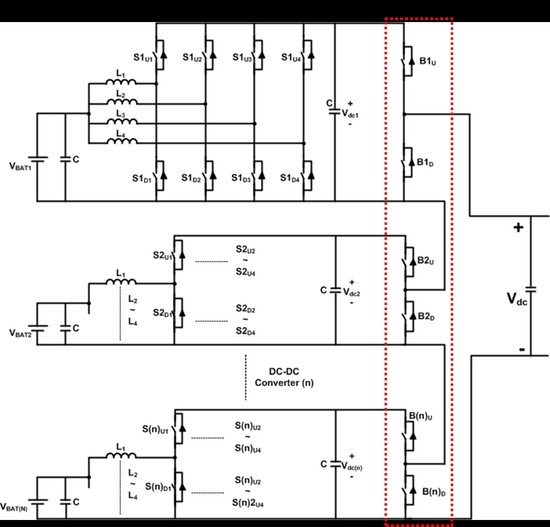Hot-Swappable Modular Converter System Control for Heterogeneous Batteries and ESS
Abstract
:1. Introduction
2. Structure of the Proposed System
2.1. Four-Leg Interleaved Bidirectional Converter
2.2. Module Bypass Configuration
3. Control Strategy for Hot-Swap
3.1. Controller Design
3.2. Four-Leg Converter for Hot-Swap
3.3. MIMC for Hot-Swap
4. Experimental Results
4.1. Result of Hot-Swap Experiment for Four-Leg Single Modular Converter
4.2. Results of Hot-Swap Experiment for the Modular Converter System
5. Conclusions
Acknowledgments
Author Contributions
Conflicts of Interest
References
- Rodriguez, J.; Lai, J.S.; Peng, F.Z. Multilevel inverters: A survey of topologies, controls, and applications. IEEE Trans. Ind. Electron. 2002, 49, 724–738. [Google Scholar] [CrossRef]
- Franquelo, L.G.; Rodriguez, J.; Leon, J.I.; Kouro, S.; Portillos, R. The age of multilevel converters arrives. IEEE Ind. Electron. Mag. 2008, 2, 28–39. [Google Scholar] [CrossRef]
- Carpita, M.; Marchesoni, M.; Pellerin, M.; Moser, D. Multilevel Converter for Traction Applications: Small-Scale Prototype Tests Results. IEEE Trans. Ind. Electron. 2008, 55, 2203–2212. [Google Scholar] [CrossRef]
- Garinto, D. Multi-interleaved zero-ripple VRM to power future microprocessors. In Proceedings of the 2007 European Conference on Power Electronics and Applications, Aalborg, Denmark, 2–5 September 2007; pp. 2–5. [Google Scholar]
- Wang, Y.-F.; Xue, L.-K.; Wang, C.-S.; Wang, P.; Li, W. Interleaved High-Conversion-Ratio Bidirectional DC–DC Converter for Distributed Energy-Storage Systems—Circuit Generation, Analysis, and Design. IEEE Trans. Power Electron. 2016, 31, 5547–5561. [Google Scholar] [CrossRef]
- Yu, W.; Qian, H.; Lai, J.-S. Design of High-Efficiency Bidirectional DC–DC Converter and High-Precision Efficiency Measurement. In Proceedings of the IECON 2008 34th Annual Conference of IEEE Industrial Electronics, Orlando, FL, USA, 10–13 November 2008; pp. 658–690. [Google Scholar]
- Lai, J.-S.; Nelson, D.J. Energy Management Power Converters in Hybrid Electric and Fuel Cell Vehicles. IEEE. Proc. 2007, 95, 766–777. [Google Scholar] [CrossRef]
- Marchesoni, M.; Vacca, C. New DC–DC converter for energy storage system interfacing in fuel cell hybrid electric vehicles. IEEE Trans. Power Electron. 2007, 22, 301–308. [Google Scholar] [CrossRef]
- Abbey, C.; Joos, G. Supercapacitor Energy Storage for Wind Energy Applications. IEEE Trans. Ind. Appl. 2007, 43, 769–776. [Google Scholar] [CrossRef]
- Thomas, S.; Stieneker, M.; De Doncker, R.W. Development of a modular high-power converter system for battery energy storage system. In Proceedings of the 2011 14th European Conference on Power electronics and Applications (EPE 2011), Portland, OR, USA, 8–10 June 2005. [Google Scholar]
- Hillers, A.; Biela, J. Optimal design of the modular multilevel converter for an energy storage system based on split batteries. In Proceedings of the 2013 15th European Conference on Power electronics and Applications (EPE), Lille, France, 2–6 September 2013. [Google Scholar]
- Kawakami, N.; Ota, S.; Kon, H.; Konno, S.; Akagi, H.; Kobayashi, H.; Okada, N. Development of a 500 kW Modular Multilevel Cascade Converter for battery energy storage systems. IEEE Trans. Ind. Appl. 2014, 50, 3902–3910. [Google Scholar] [CrossRef]
- Wu, W.; Wu, X.; Yin, J.; Jing, L.; Wang, S.; Li, J. Characteristic Analysis and Fault-Tolerant Control of Circulation Current for Modular Multilevel Converters under Sub-Module Faults. Energies 2017, 10, 1827. [Google Scholar] [CrossRef]
- Liu, H.; Ma, K.; Loh, P.C.; Blaabjerg, F. Online Fault Identification Based on an Adaptive Observer for Modular Multilevel Converters Applied to Wind Power Generation Systems. Energies 2015, 8, 7140–7160. [Google Scholar] [CrossRef]
- Zheng, Z.; Wang, K.; Xu, L.; Li, Y. A Hybrid Cascaded Multilevel Converter for Battery Energy Management Applied in Electric Vehicles. IEEE Trans. Power Electron. 2014, 29, 3537–3546. [Google Scholar] [CrossRef]
- Trintis, I.; Munk-Nie1sen, S.; Teodorescu, R. Cascaded H-bridge with bidirectional boost converters for energy storage. In Proceedings of the 2011 14th European Conference on Power Electronics and Applications (EPE 2011), Birmingham, UK, 30 August–1 September 2011. [Google Scholar]
- Akagi, H. Classification, terminology, and application of the modular multilevel cascade converter (MMCC). In Proceedings of the 2010 International Power Electronics Conference (IPEC), Sapporo, Japan, 21–24 June 2011; Volume 26, pp. 3119–3130. [Google Scholar]
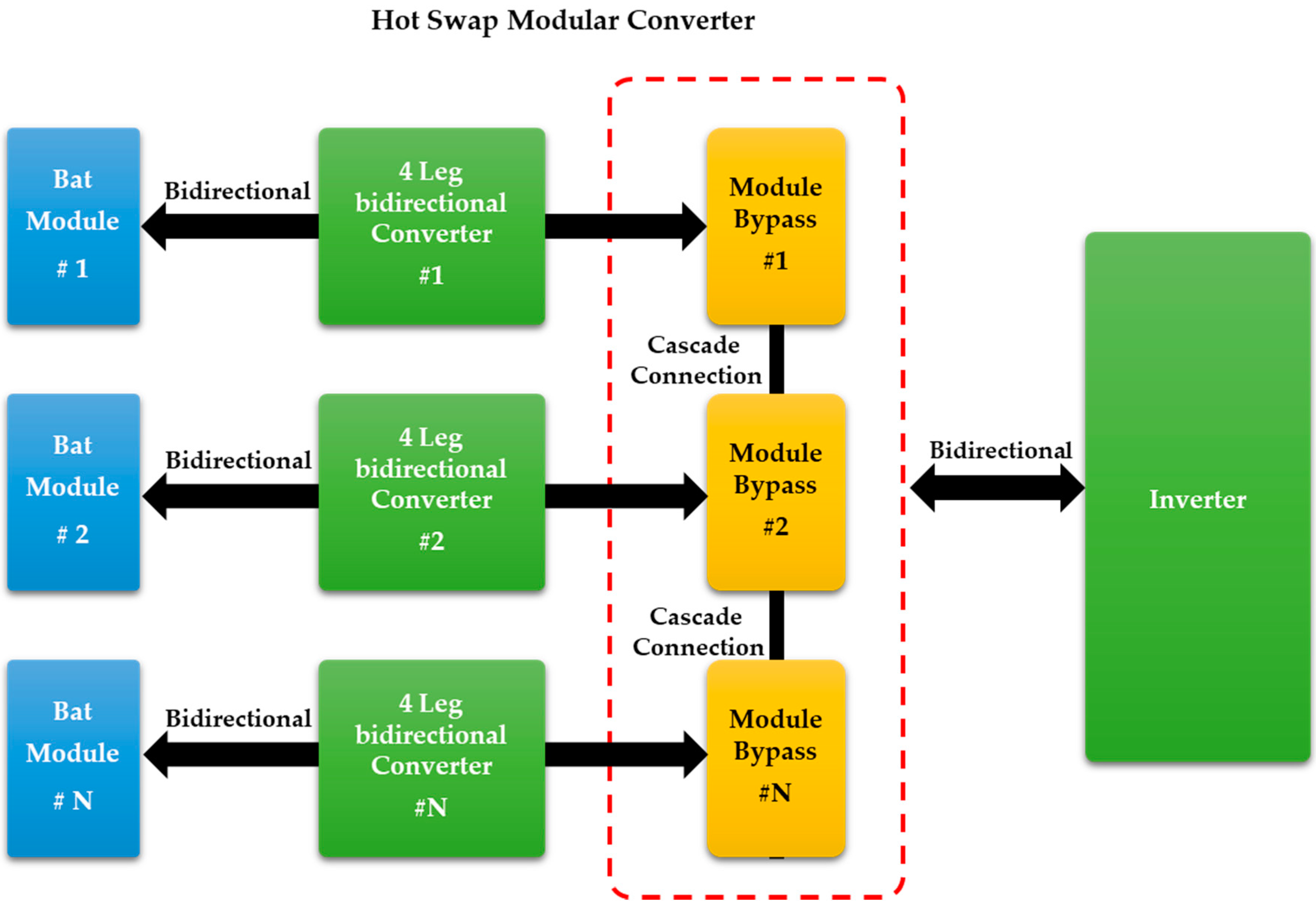
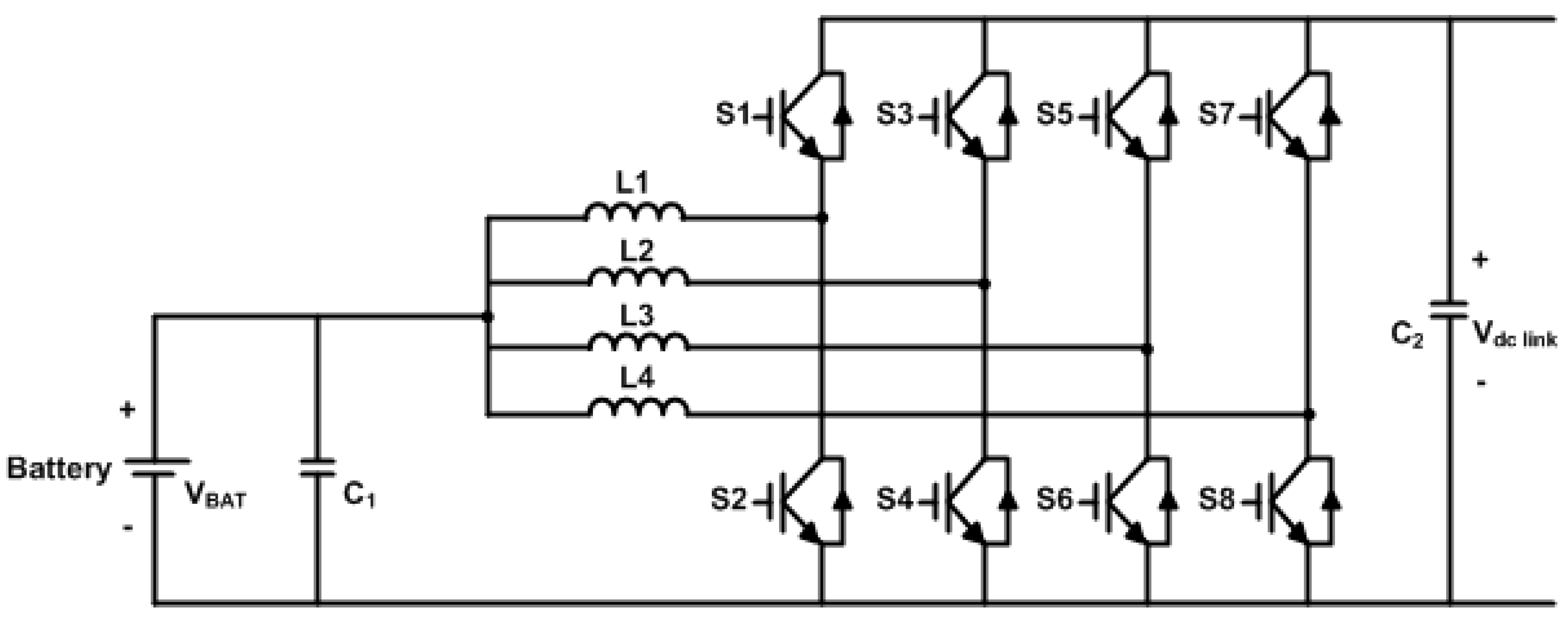
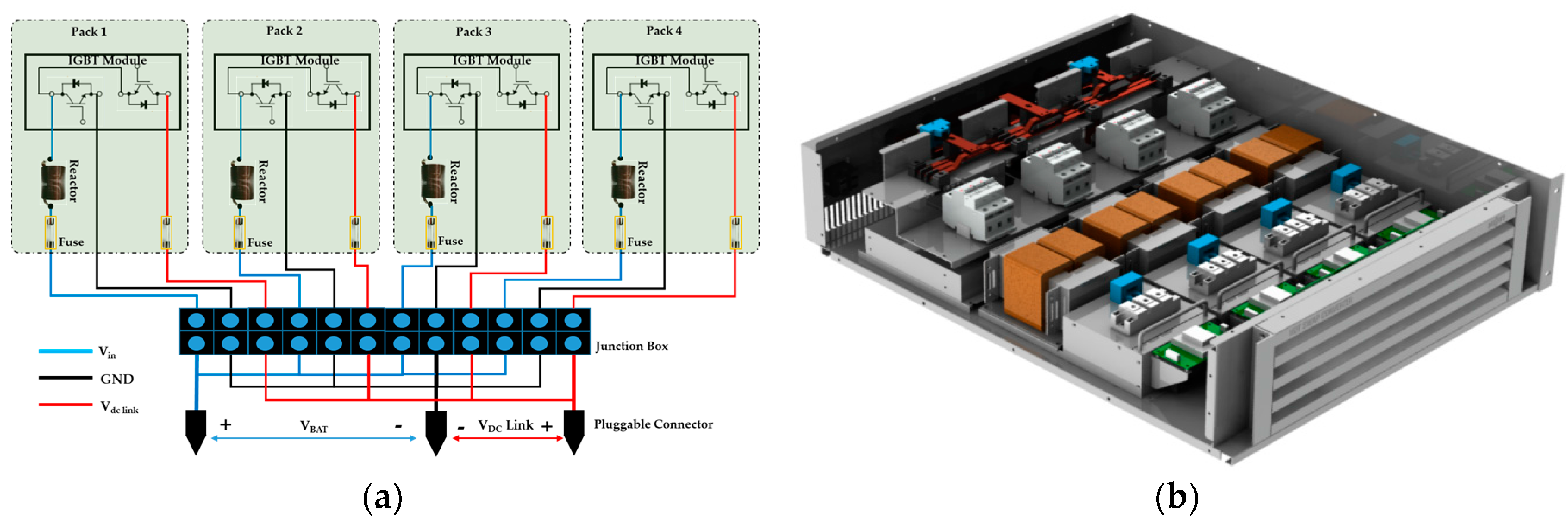





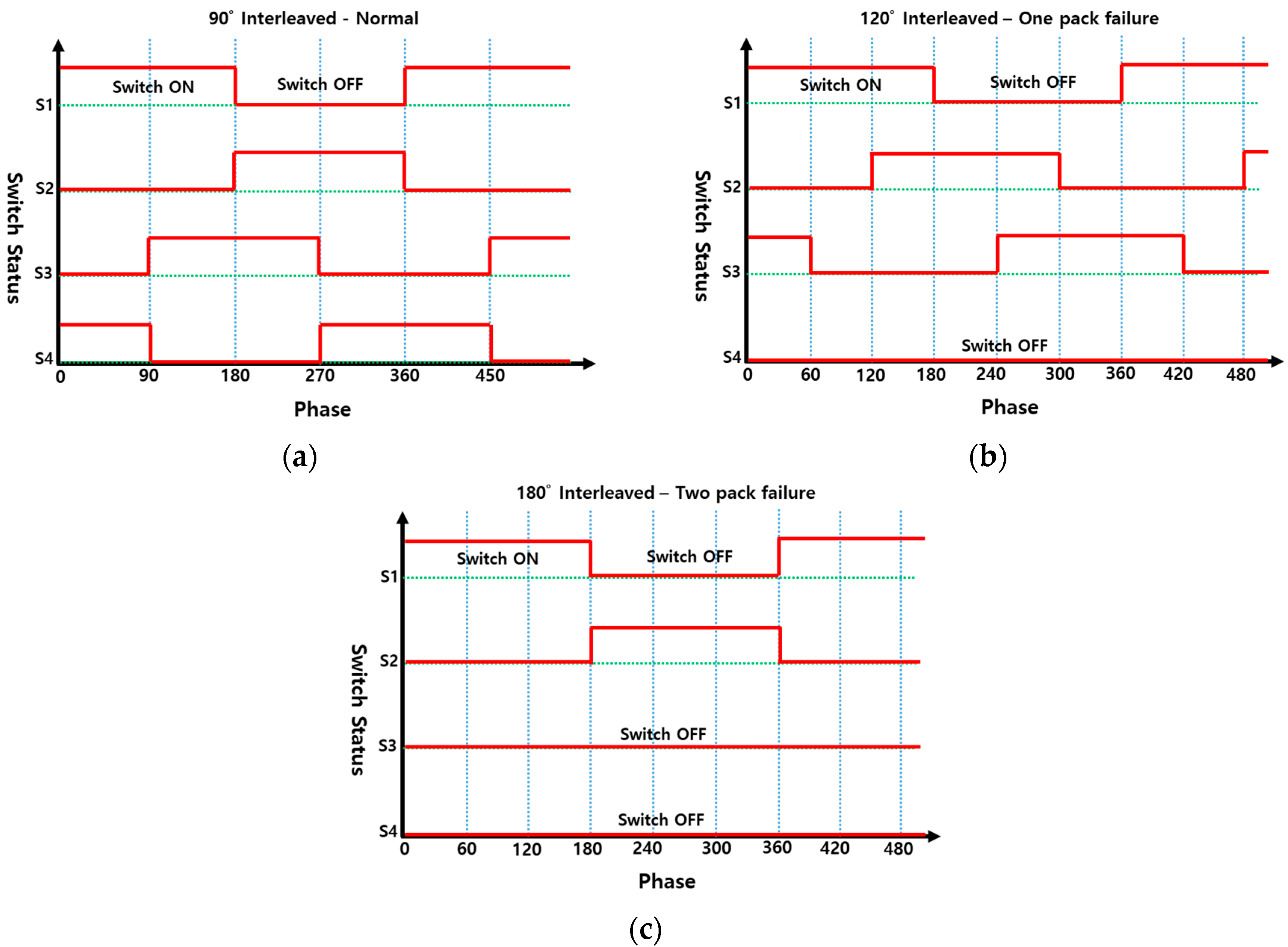
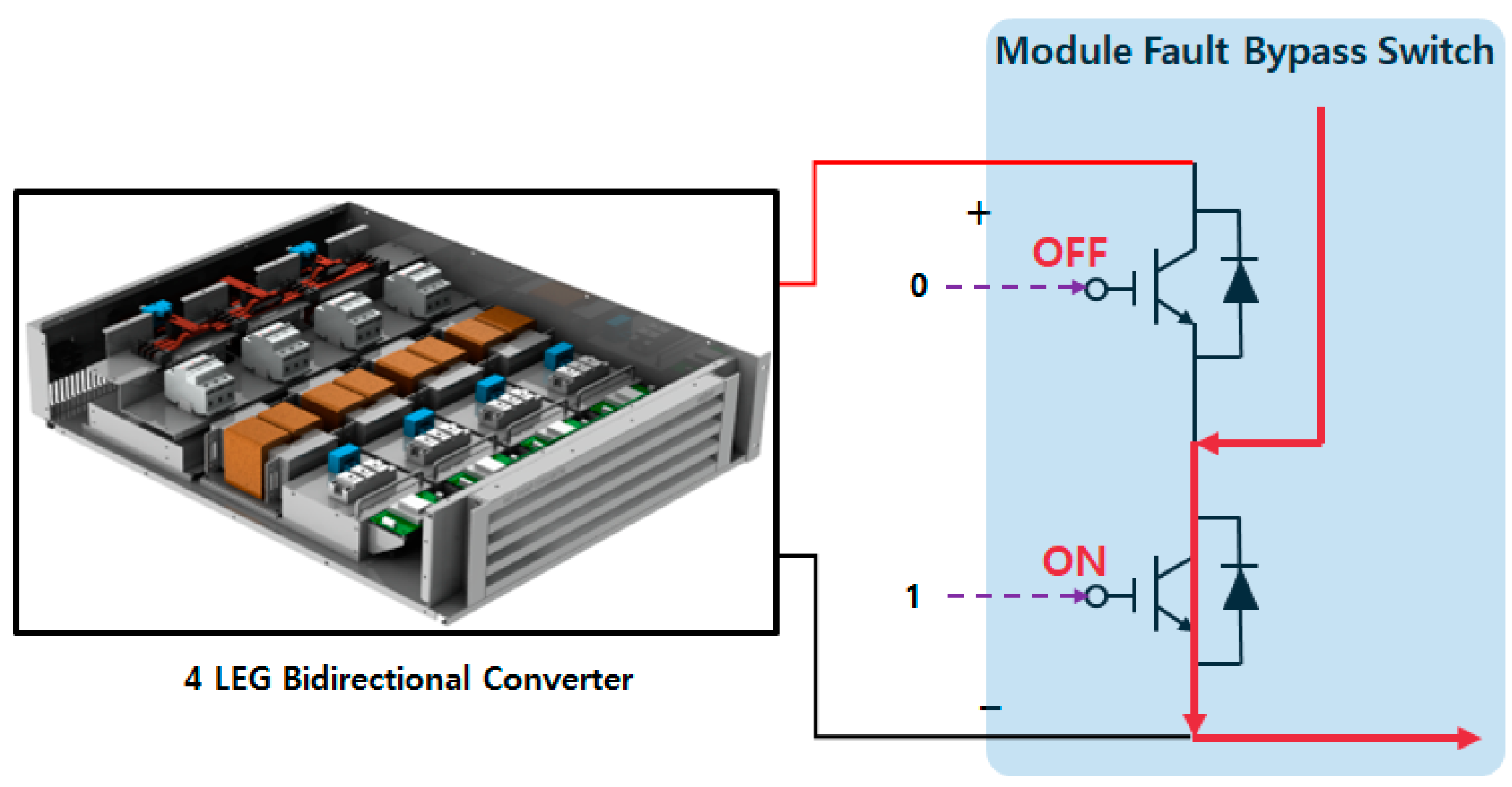
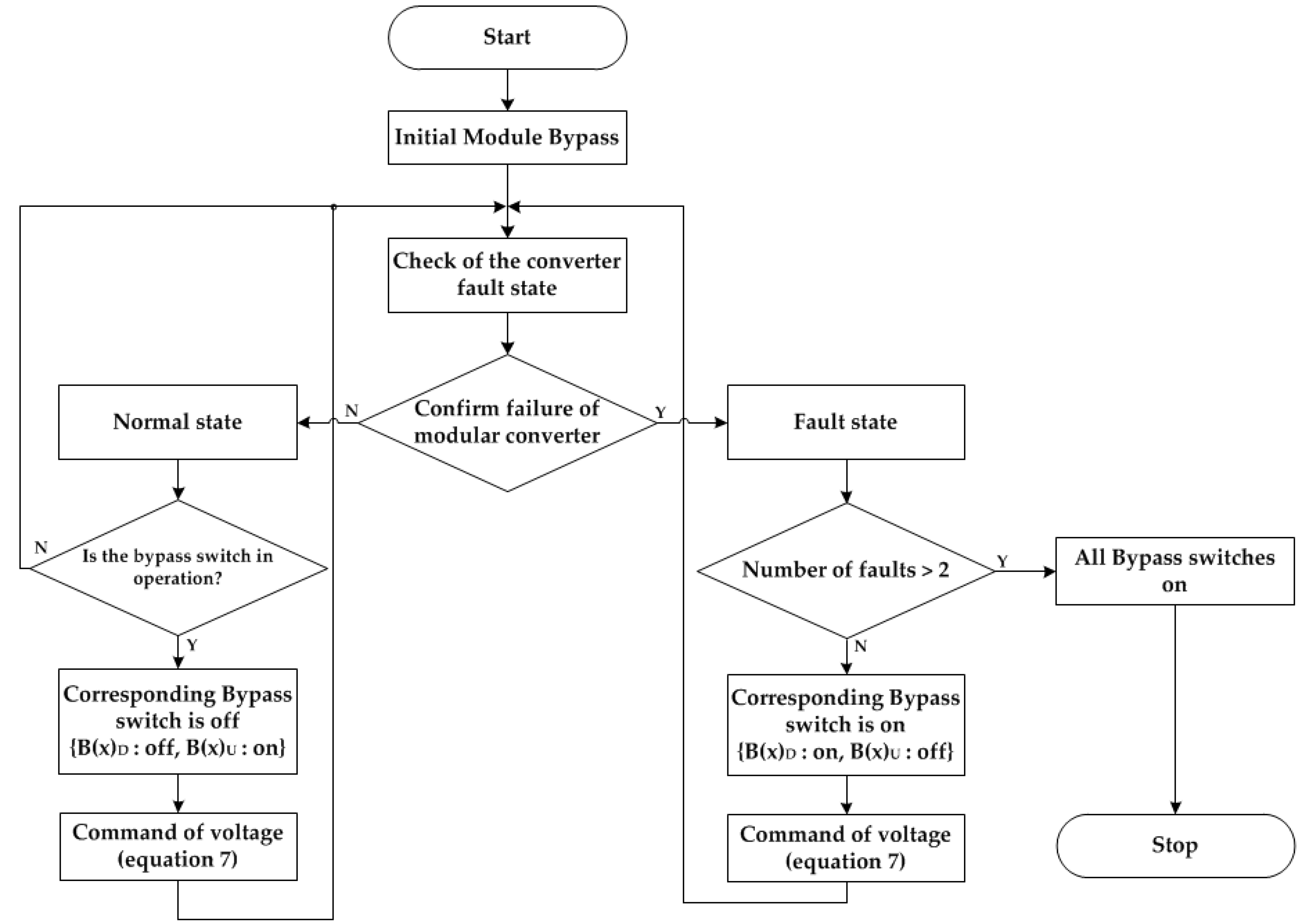

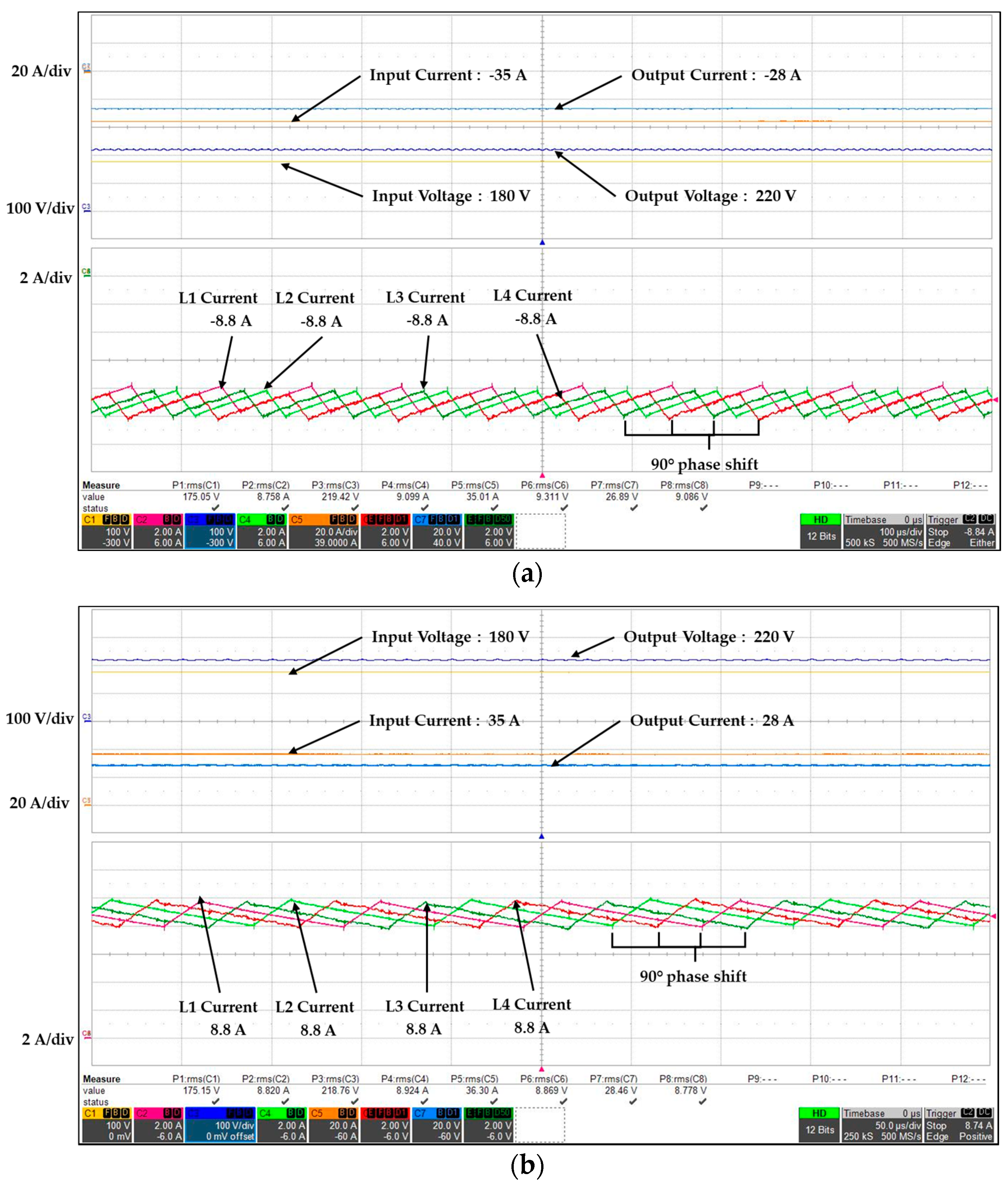

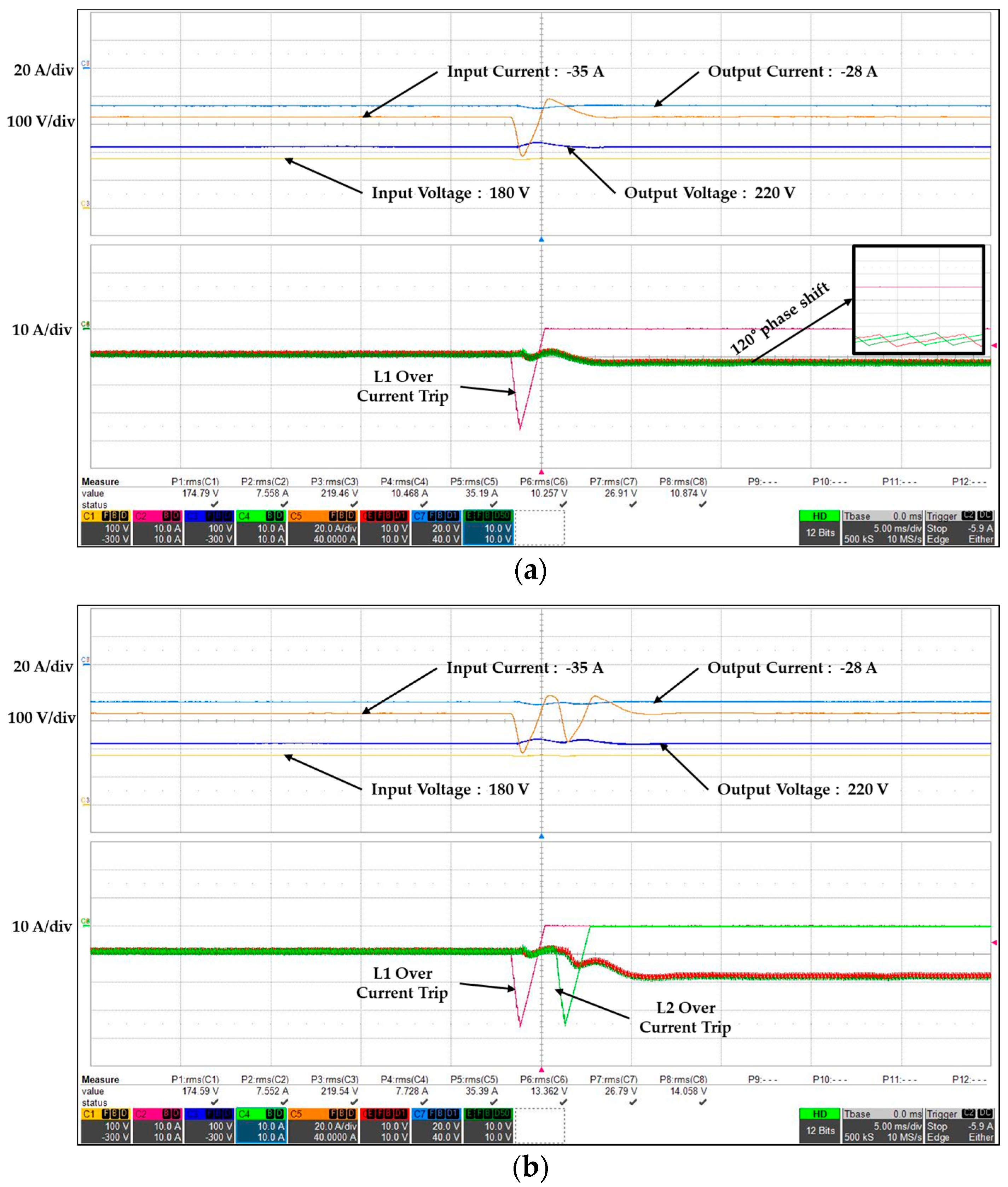
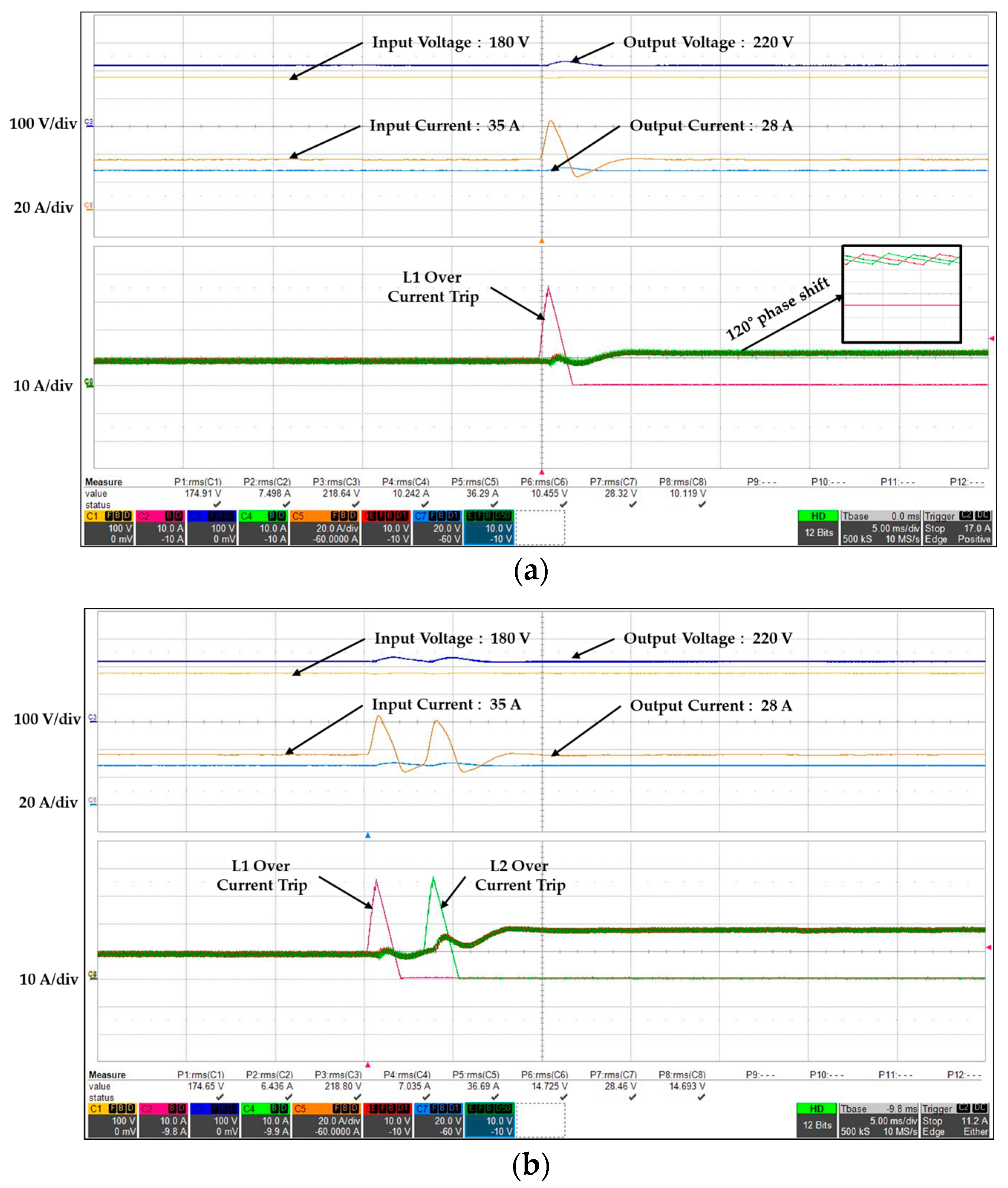
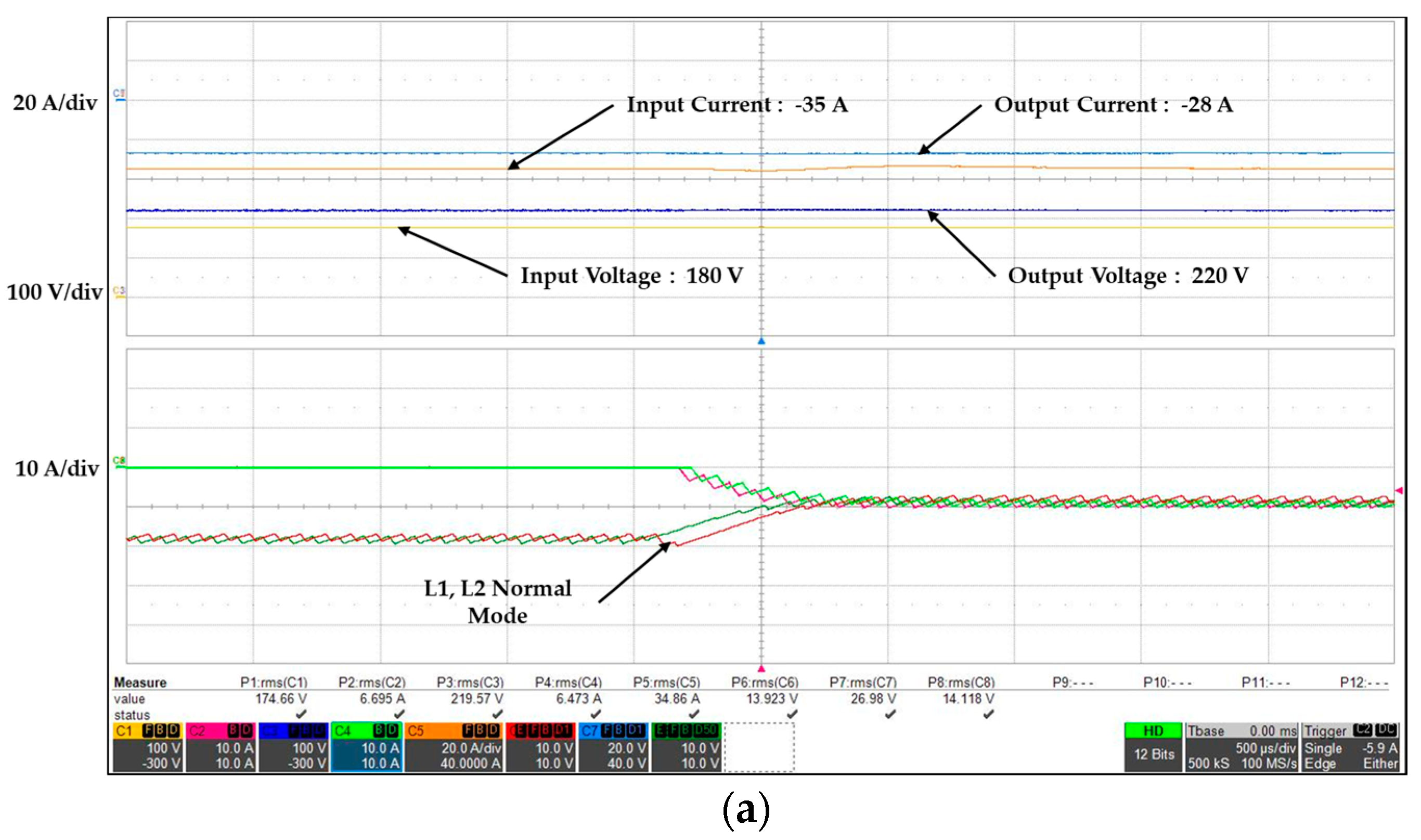
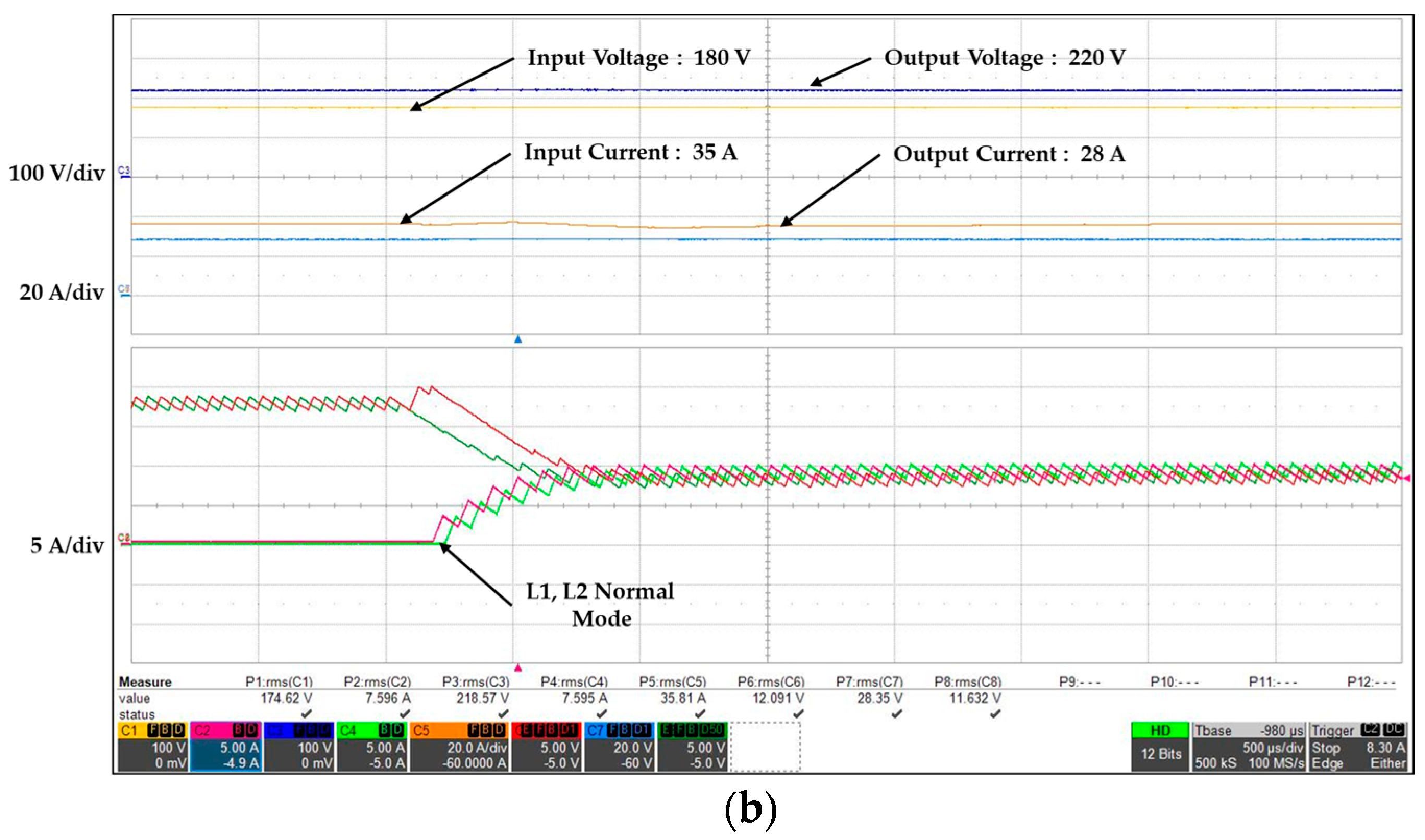
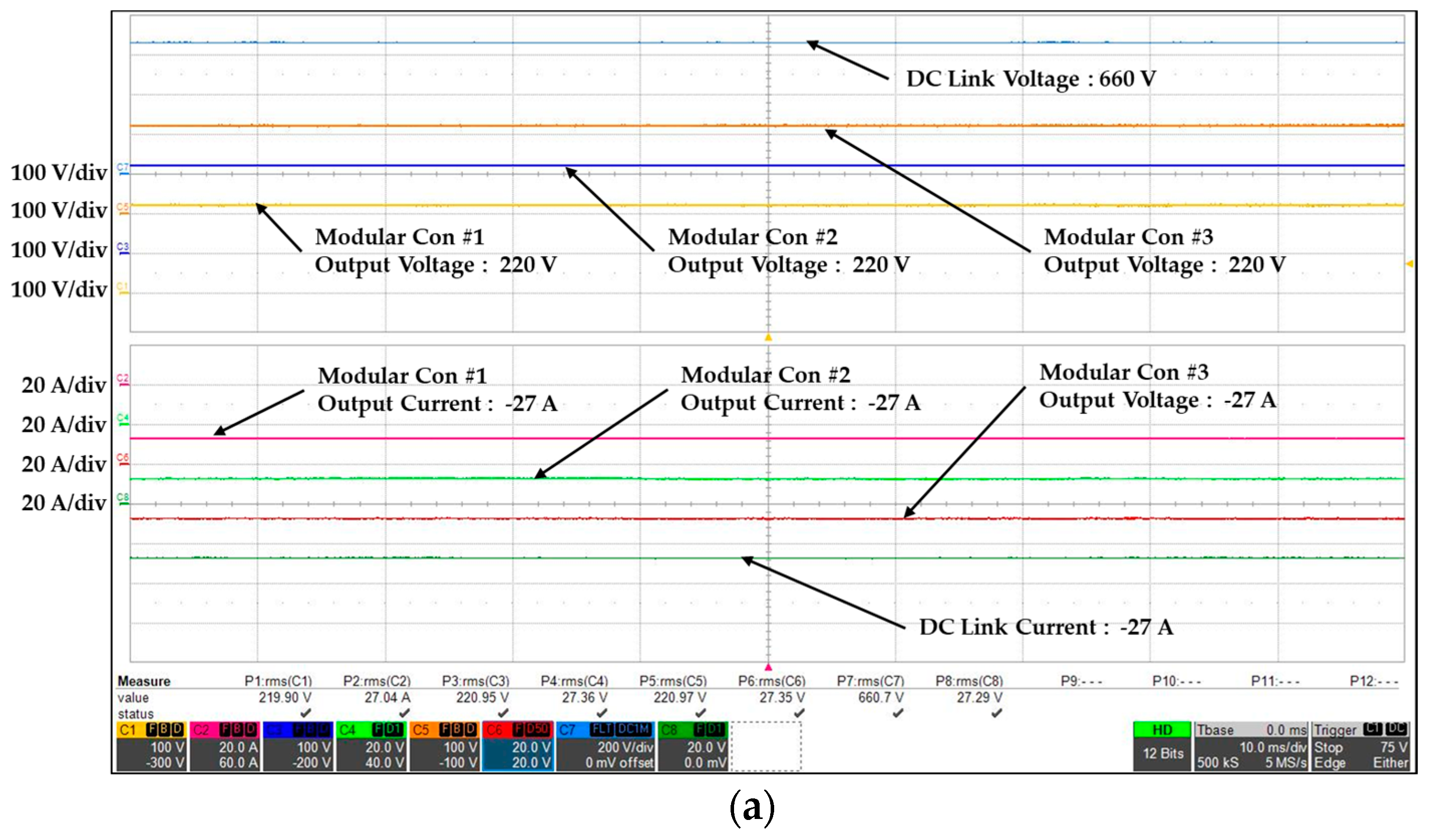


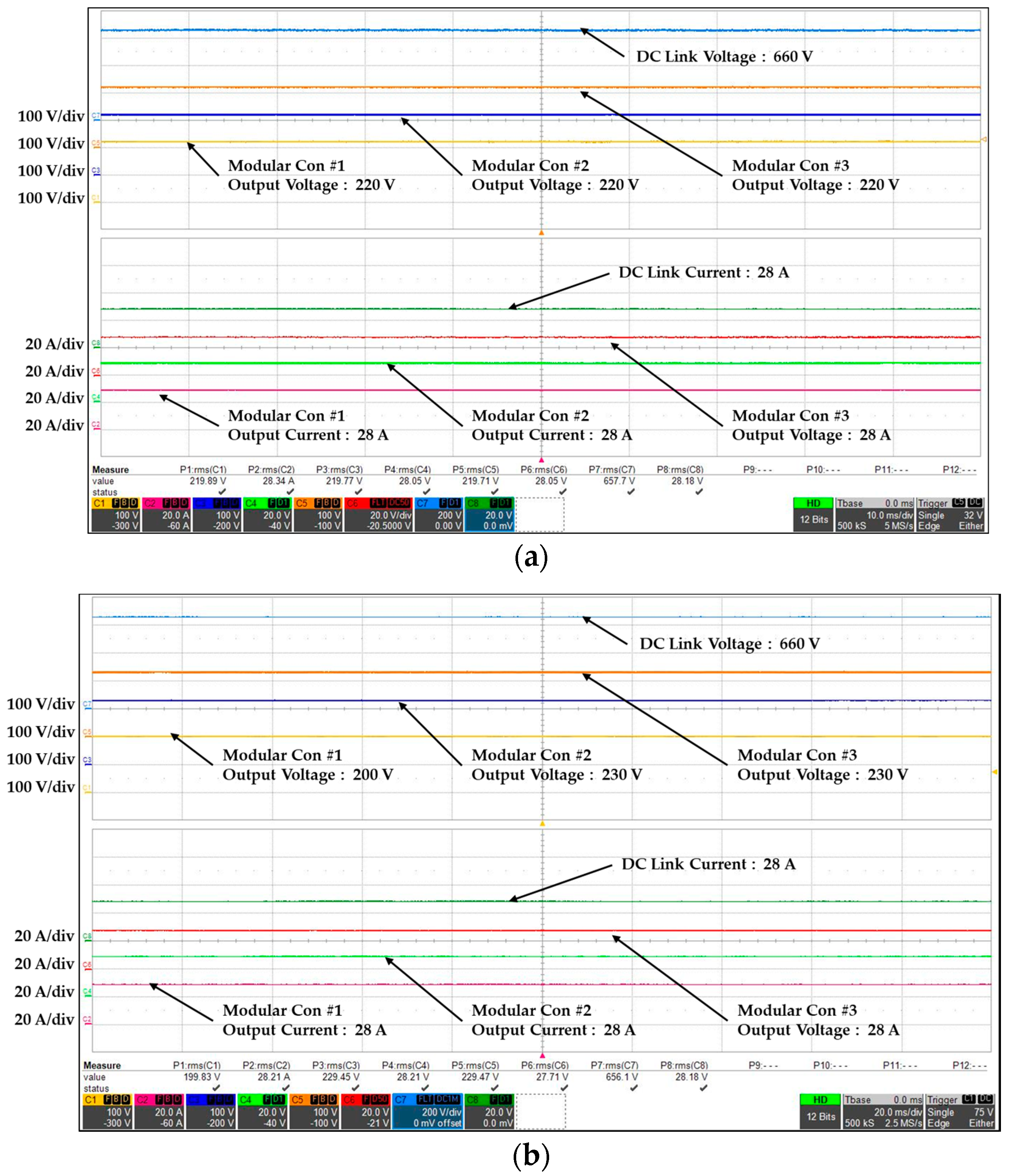
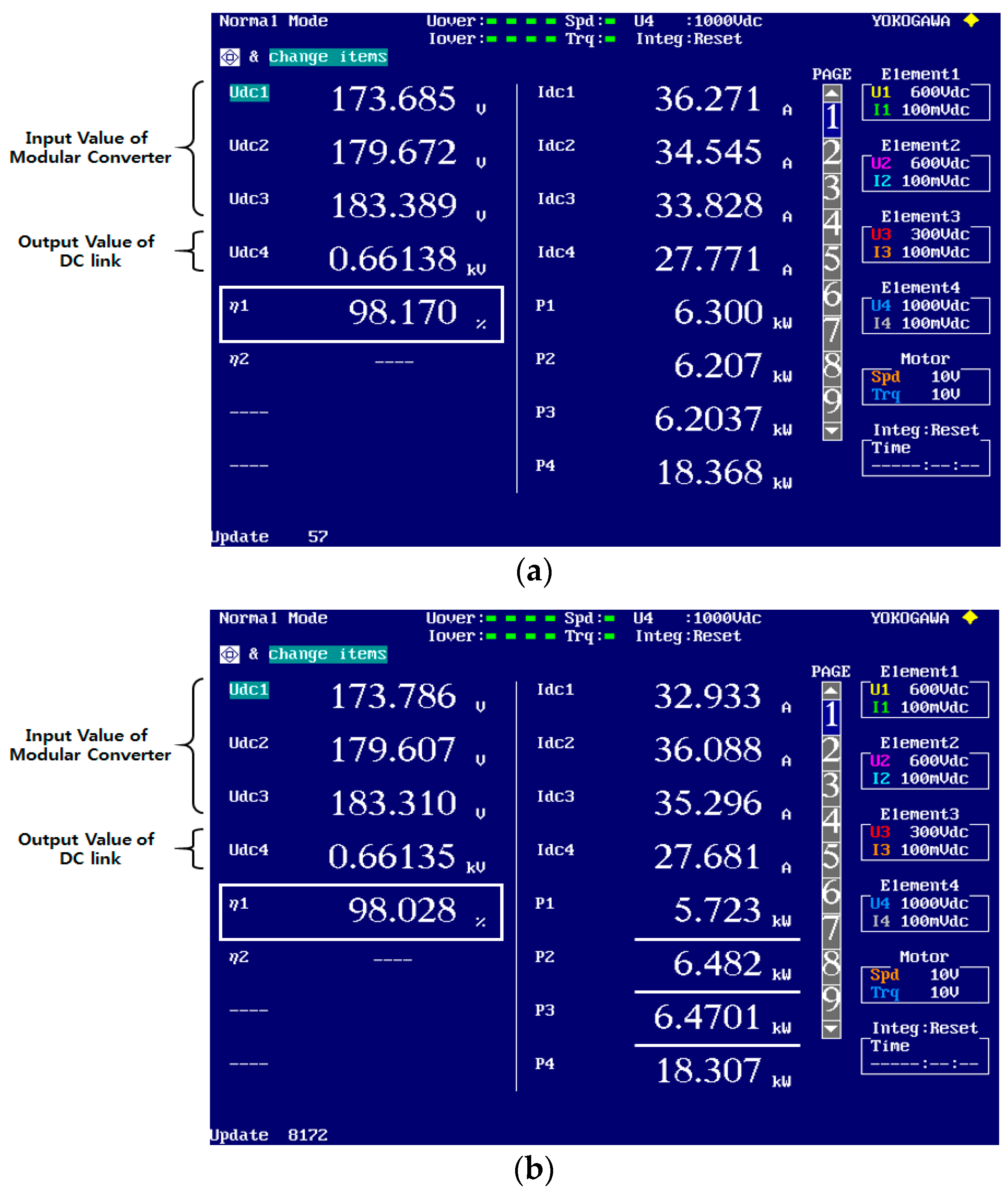

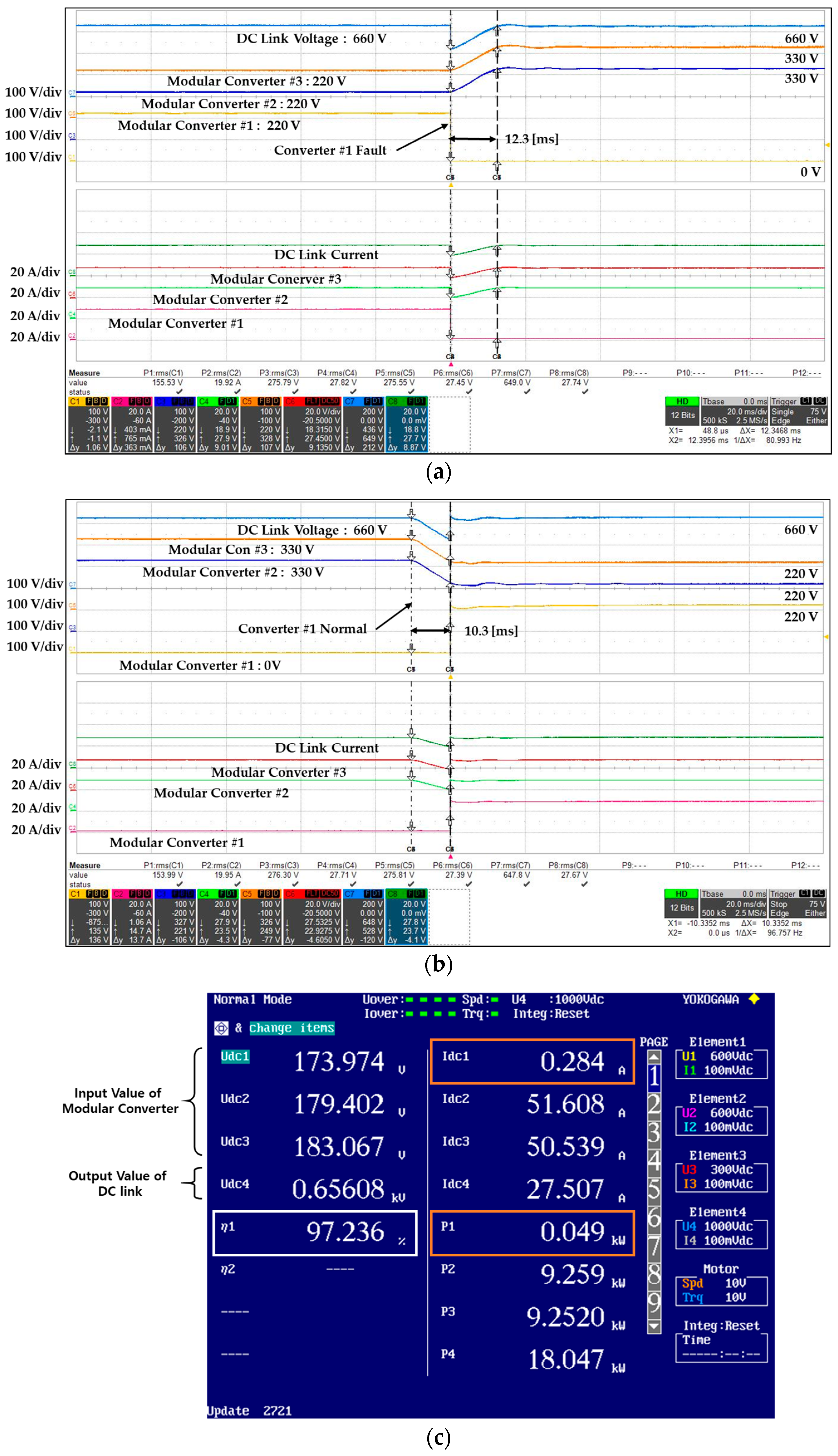
| Parameter | Value | Parameter | Value |
|---|---|---|---|
| Input voltage | 165–190 V | Switching | 10 kHz |
| DC link voltage | 660 V | DC reactor | 2 mH |
| Modular converter power | 6 kW | Input capacitance | 1000 μF |
| Converter overdrive ratio | 150% | Output capacitance | 1000 μF |
© 2018 by the authors. Licensee MDPI, Basel, Switzerland. This article is an open access article distributed under the terms and conditions of the Creative Commons Attribution (CC BY) license (http://creativecommons.org/licenses/by/4.0/).
Share and Cite
Cha, D.-S.; Choi, J.-S.; Oh, S.-Y.; Ahn, H.-J.; Lim, Y.-C. Hot-Swappable Modular Converter System Control for Heterogeneous Batteries and ESS. Energies 2018, 11, 309. https://doi.org/10.3390/en11020309
Cha D-S, Choi J-S, Oh S-Y, Ahn H-J, Lim Y-C. Hot-Swappable Modular Converter System Control for Heterogeneous Batteries and ESS. Energies. 2018; 11(2):309. https://doi.org/10.3390/en11020309
Chicago/Turabian StyleCha, Dae-Seak, Jung-Sik Choi, Seung-Yeol Oh, Hyun-Jin Ahn, and Young-Cheol Lim. 2018. "Hot-Swappable Modular Converter System Control for Heterogeneous Batteries and ESS" Energies 11, no. 2: 309. https://doi.org/10.3390/en11020309



